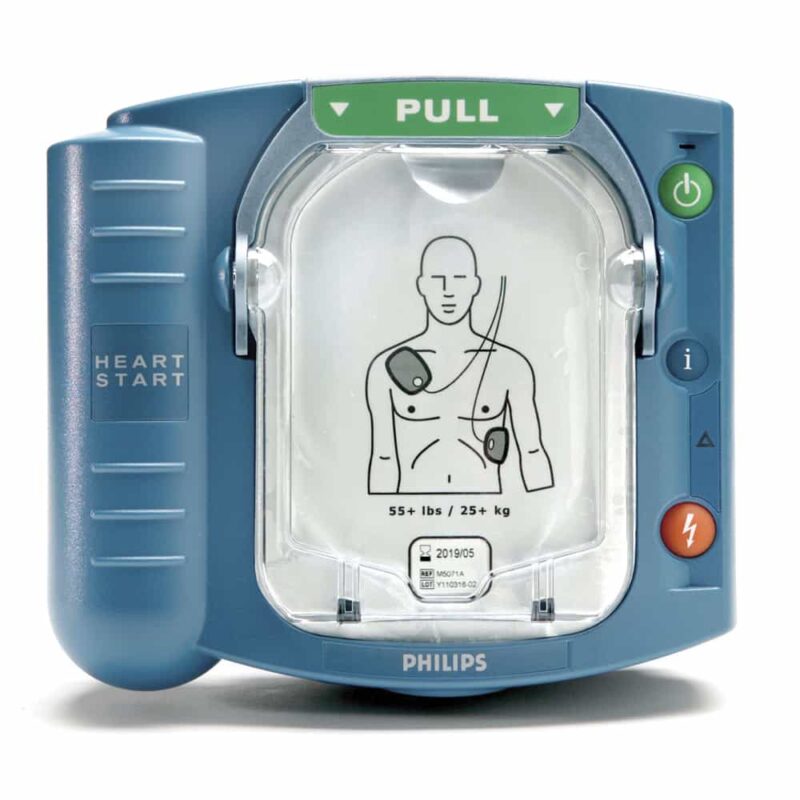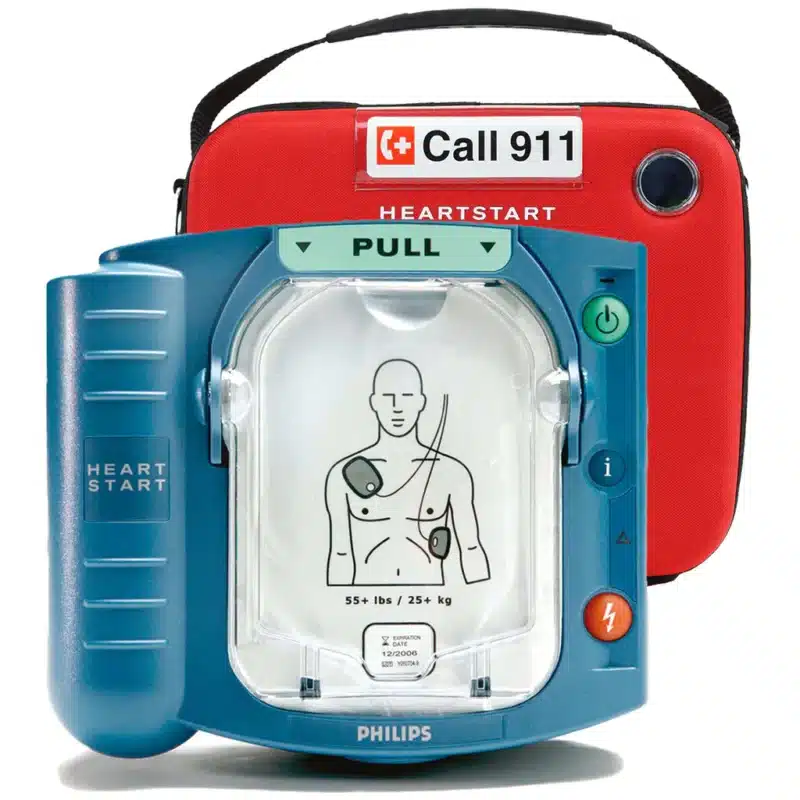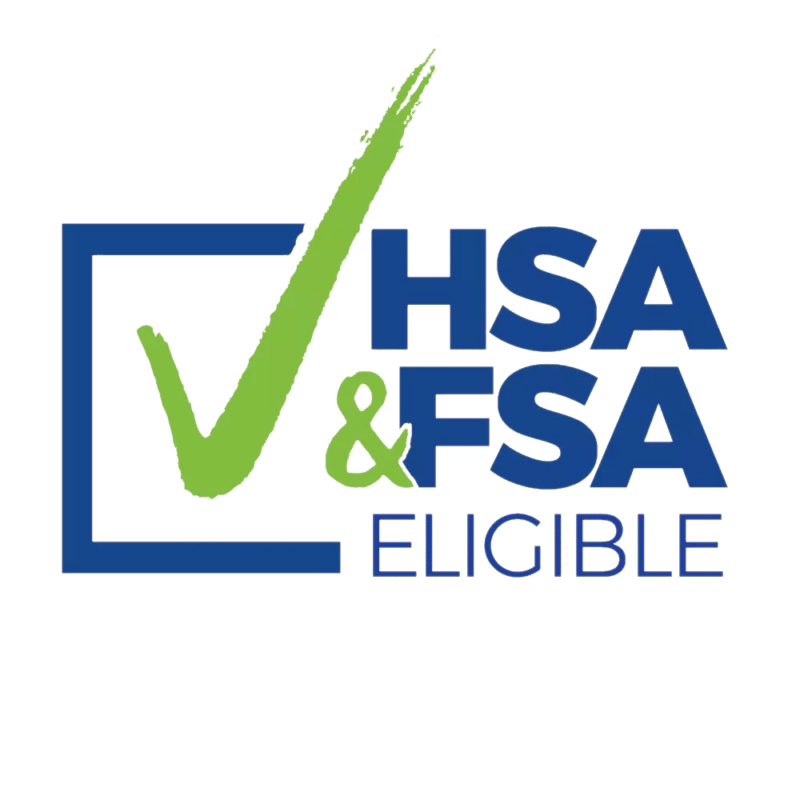Uncategorized
Philips On-site AED Guide: Maintenance, Training, and Support
Sudden cardiac arrest (SCA) remains one of the leading causes of unexpected death worldwide. It can strike without warning, in homes, workplaces, schools, and public spaces. In these moments, quick access to an Automated External Defibrillator (AED) can be the difference between life and death. Philips on-site AEDs are designed with simplicity, reliability, and user confidence in mind, making them a popular choice for organizations that want to ensure readiness for emergencies.
Statistics emphasize the urgency of AED availability. According to the American Heart Association, more than 356,000 out-of-hospital cardiac arrests occur each year in the U.S., and the survival rate can triple when bystanders use an AED before emergency medical personnel arrive (heart.org). These numbers highlight why AEDs, particularly user-friendly devices like those from Philips, need not only to be installed but also maintained, supported, and paired with training.
This guide explores three essential aspects of deploying Philips on-site AEDs effectively: proper maintenance, adequate training, and ongoing support.
Why Philips On-site AEDs Stand Out
Philips has positioned itself as a trusted name in the AED market, largely because of its focus on accessibility. The Philips HeartStart OnSite AED, for example, is specifically designed for ordinary people with no medical background. With voice prompts, step-by-step instructions, and lightweight portability, it enables even untrained bystanders to act quickly and confidently.
Moreover, Philips AEDs come with self-testing features and simple maintenance indicators that reduce the burden on organizations. This is crucial, as studies have shown that failure rates in AEDs due to poor maintenance or depleted batteries can reach nearly 23% when devices are not regularly checked. Having a system that reduces complexity is critical to ensuring these life-saving devices are always ready.
Maintenance: Keeping Philips AEDs Ready
An AED is only as effective as its state of readiness. Philips designs their on-site AEDs to be low-maintenance, but regular checks are still essential. Key areas of maintenance include:
Battery Checks
Philips AEDs use long-lasting lithium batteries, with a shelf life of up to four years. However, checking battery readiness indicators regularly ensures there’s no unexpected power failure during an emergency.
Electrode Pads
Pads generally need replacement every two years or immediately after use. Expired or dried-out pads can prevent the AED from delivering shocks effectively. Philips makes replacement pads easy to identify and install, but scheduling reminders is crucial.
Self-Tests and Indicators
Philips AEDs conduct regular self-tests, flashing green lights when functional and warning indicators if service is needed. This automated check reduces human error, but staff should still visually inspect the device weekly.
Record Keeping
Organizations should log every inspection, battery replacement, or pad change. Not only does this fulfill compliance in some regions, but it also ensures no gaps in device readiness.
By adopting a proactive maintenance routine, workplaces, schools, or community centers ensure that their Philips on-site AEDs remain functional and reliable.

Training: Building Confidence in AED Use
AEDs like Philips OnSite are designed for lay responders, but training enhances confidence and efficiency. Studies show that bystander hesitancy is a significant barrier; even when AEDs are present, some hesitate to use them due to fear of making mistakes.
Training addresses this challenge by:
Reducing fear:
Hands-on practice with training units helps participants understand that AEDs are safe and will not deliver shocks unless necessary.
Improving speed:
In cardiac emergencies, every minute reduces survival chances by 7–10%. Training ensures responders act quickly.
Integrating CPR:
Philips encourages AED use alongside high-quality CPR. Training often combines both skills, giving responders a holistic approach to emergency response.
Philips offers training packages and even specialized training AEDs, which mimic the function of real devices without delivering shocks. Organizations that invest in annual or bi-annual refresher courses empower their teams to act decisively.
Support: Beyond Installation
Simply installing an AED is not enough. Ongoing support ensures the program remains effective. Philips and its distributors often provide support programs that include:
Customer Service and Troubleshooting
Access to Philips technical support teams for guidance when indicators flash or when there’s confusion about maintenance.
Replacement Programs
Some packages offer automatic shipment of new pads or batteries before expiration dates, ensuring organizations never face downtime.
Integration with Emergency Plans
AED support also includes helping organizations integrate devices into their safety protocols—clearly marking AED locations, training staff, and ensuring devices are accessible to all.
Regulatory Compliance
Many regions require AED programs to meet certain standards, such as documented maintenance checks or certified training sessions. Philips support helps organizations remain compliant and audit-ready.
This ongoing assistance ensures AED deployment isn’t a one-time investment but a sustainable, long-term safety solution.
Real-World Impact of Philips AEDs
The effectiveness of Philips AEDs is well-documented. Community centers, airlines, offices, and even fitness clubs have implemented these devices, with countless testimonials of lives saved. The user-friendly design is a consistent theme: ordinary people, with little to no medical background, are able to administer lifesaving shocks quickly.
Moreover, organizations report fewer maintenance lapses compared to other devices, largely due to the self-test features and intuitive design. This makes Philips AEDs not only effective in emergencies but also practical for daily readiness.
Best Practices for Organizations
For any workplace, school, or public facility considering Philips on-site AEDs, here are best practices:
- Assign AED Coordinators: Designate staff responsible for inspections and logging.
- Schedule Reminders: Set digital reminders for pad and battery replacement timelines.
- Train Broadly: Go beyond a single team—train as many staff and volunteers as possible.
- Visibility: Place AEDs in highly visible, accessible locations with clear signage.
- Leverage Support: Use Philips’ support programs and distributor services to minimize administrative burdens.
These best practices ensure Philips AEDs are not just devices on a wall but active tools in saving lives.
Conclusion
Philips on-site AEDs combine reliability, simplicity, and advanced features that empower ordinary people to act decisively in cardiac emergencies. But to unlock their full potential, organizations must prioritize three areas: consistent maintenance, regular training, and ongoing support. By doing so, they transform AED installation into a comprehensive lifesaving program.
For businesses and organizations managing multiple AED units or safety programs, seamless online hosting and management tools can enhance oversight. Platforms powered by Calmed Equipment make it easier to centralize AED training records, inspection logs, and compliance documentation—ensuring your Philips AED program remains both effective and audit-ready.






